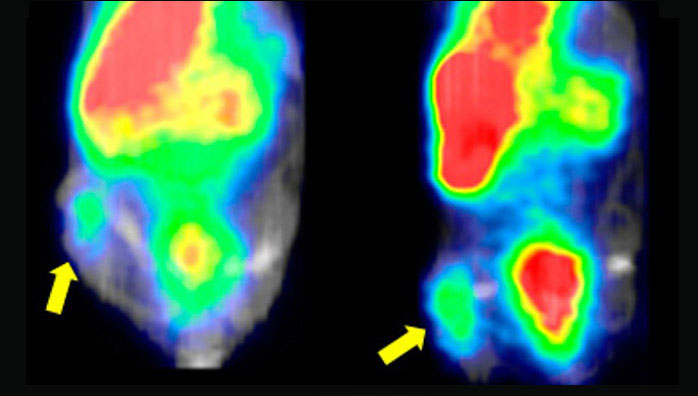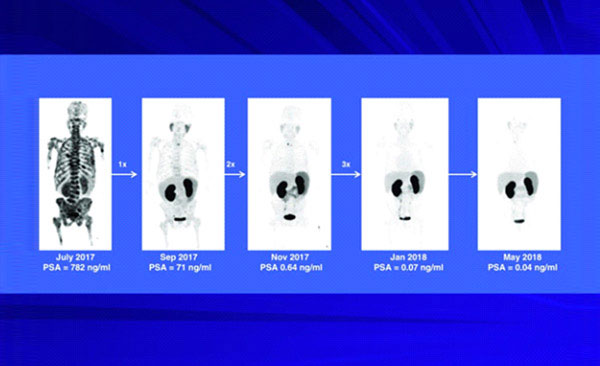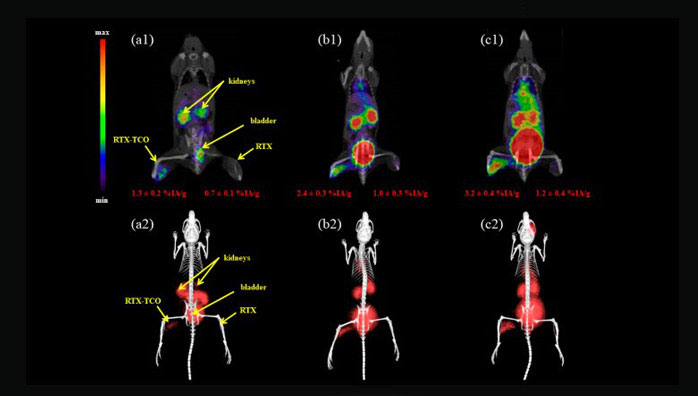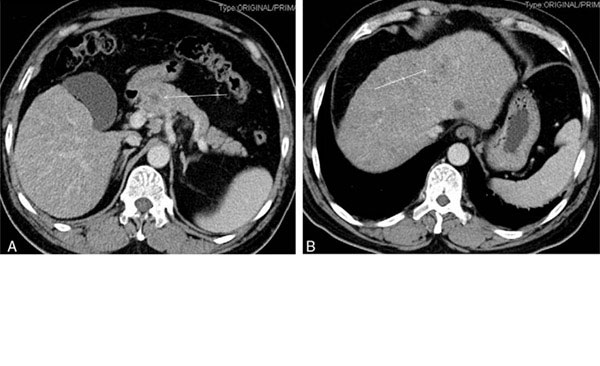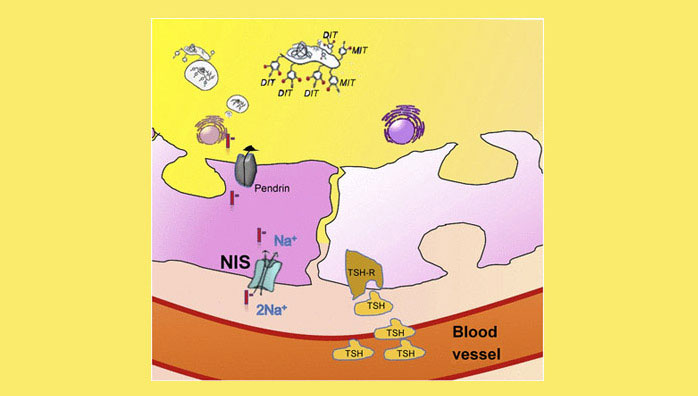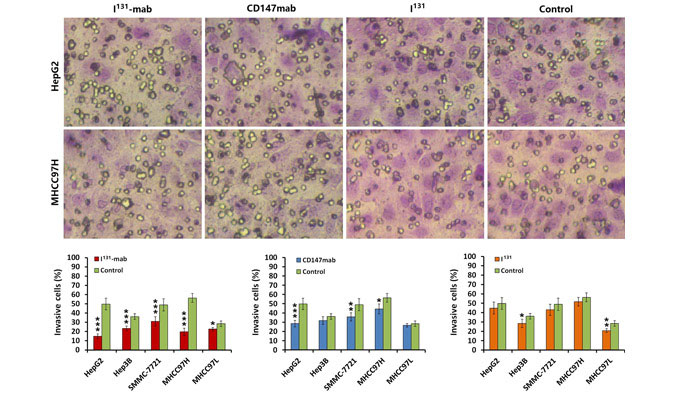

Comparison of the efficacy of strontium-89 chloride in treating bone metastasis of lung, breast, and prostate cancers
Abstract
Objective: The aim of this study was to comparatively evaluate the efficacy of strontium-89 chloride (89 SrCl2) in treating bone metastasis-associated pain in patients with lung, breast, or prostate cancer.
Materials and Methods: The 126 patients with lung cancer included 88, 16, 15, 4, and 3 patients with adenocarcinoma, squamous cell carcinoma, nonsmall cell carcinoma, mixed carcinoma, and small cell carcinoma, respectively, and the control group consisted of patients with breast (71 patients) or prostate cancer (49 patients) who underwent 89 SrCl2 treatment during the same period. The treatment dose of 89 SrCl2 was 2.22 MBq/kg.
Results: The efficacy rate of treatment in the lung cancer group was 75.4%, compared to 95.0% in the control group. Approximately 67% of patients with lung cancer and bone metastases and 47% of control patients exhibited mild-to-moderate reductions of leukocyte and platelet counts 4 weeks after 89 SrCl2 treatment.
Conclusions: 89 SrCl2 can safely and effectively relieve bone pain caused by bone metastasis from lung cancer. However, its efficacy was lower in patients with lung cancer with bone metastasis than in those with breast or prostate cancer with bone metastasis, and its effects on the peripheral hemogram were also significantly stronger in the lung cancer group.
Keywords: Bone metastasis, lung cancer, strontium-89 chloride
| How to cite this article: Ye X, Sun D, Lou C. Comparison of the efficacy of strontium-89 chloride in treating bone metastasis of lung, breast, and prostate cancers. J Can Res Ther 2018;14, Suppl S1:36-40 |
| How to cite this URL: Ye X, Sun D, Lou C. Comparison of the efficacy of strontium-89 chloride in treating bone metastasis of lung, breast, and prostate cancers. J Can Res Ther [serial online] 2018 [cited 2019 May 17];14:36-40. Available from: http://www.cancerjournal.net/text.asp?2018/14/8/36/181172 |
Introduction
More than 50% of patients with cancer experience bone pain, and breast-, lung-, and prostate cancer-associated metastatic bone diseases account for 80% of cases of bone pain among cancer patients.[1] Bone metastasis can cause unbearable intractable pain, leading to reductions in quality of life. Strontium-89 chloride (89 SrCl2) is a radiopharmaceutical of palliative care used to treat metastatic bone cancer-associated pain.[2],[3] The agent can effectively kill tumor cells, induce tumor cell apoptosis,[4],[5] and restore patients' immune functions.[6]89 SrCl2 is the palliative care mainly used to treat pain caused by the bone metastasis of prostate and breast cancers.[7],[8] The treatment is considered optimal for this indication,[9],[10] and in some cases, metastases might subside.[11] Lung cancer is currently the malignant tumor with the highest incidence and mortality in China,[12] and as its incidence continues to increase, research on the application of 89 SrCl2 to treat the bone metastasis of lung cancer is also increasing, although studies have reported varying effects. To further investigate the clinical application value and characteristics of 89 SrCl2 in treating pain caused by the bone metastasis of lung cancer, we followed up patients with lung cancer and bone metastasis who underwent 89 SrCl2 treatment and compared the treatment outcomes with those of patients with prostate or breast cancer and bone metastasis. Meanwhile, the related literature was reviewed to analyze the possible factors that might affect treatment efficacy.
Materials and methods
Patient information
Patients with lung cancer, prostatic cancer, and breast cancer, who were treated by 89 SrCl2 in Shao Yifu Affiliated Hospital and the Second Affiliated Hospital of School of Medicine in Zhejiang University were collected from 2009 to 2013. Patients were excluded if they had not bone X-ray films, computed tomography/magnetic resonance imaging (CT/MRI), or pathological examination had diagnosed with extensive metastatic bone tumors, or survival time was <3 months after treated by 89 SrCl2. A total of 246 patients were obtained, and all of these patients had been signed informed consents before treatment. Among the 126 patients with lung cancer, 88 were male, and 38 were female. The patients, including 88, 16, 15, 4, and 3 patients with adenocarcinoma, squamous cell carcinoma, nonsmall cell carcinoma, mixed carcinoma, and small cell carcinoma, respectively, were 40–81 years old. The control group included 120 patients who underwent 89 SrCl2 treatment during the same period, including 71 patients with breast cancer and 49 patients with prostate cancer. The age of the control group ranged from 36 to 79 years, and the duration of primary diseases varied from newly diagnosed to 5 years. All patients were confirmed to have an extensive metastatic bone tumor by bone scintigraphy, radiography, CT/MRI, or pathological examination. The bone metastatic lesions were observed as abnormal radioactive concentrated shadows (osteoblastic lesions) by bone scintigraphy. The patients had various degrees of bone pain, with or without activity limitation, and some patients had experienced treatment failure after radiotherapy and/or chemotherapy at least 2 months before 89 SrCl2 treatment. The examination results for hepatonephric function were normal for all patients, and there were no cases of spinal pathological fracture or spinal cord compression. Each patient had a leukocyte count of >3.5 × 109/L and a platelet count of >80 × 109/L.
Treatment
The treatment medicine (89 SrCl2) was provided by Shanghai Kexing Co., China. The therapy was intravenously administrated at a dosage of 1.48–2.22 MBq (40–60 μCi)/kg body weight. The detailed information regarding the patients' body weights, the drug dosages administrated, the batch numbers used, and possible side effects or discomforts experienced during drug administration was recorded.
Follow-up and therapeutic evaluation
The follow-up period after 89 SrCl2 treatment in the two groups ranged from 3 months to 4 years. In addition to regular hemogram analysis, the patients were mainly observed for improvements in pain, sleep, and activities to determine the efficacy of treatment. According to World Health Organization (WHO), the grades of pain includes O grade, no pain; I grade, mild pain, is intermittent pain, and drug may be not used; II grade, moderate pain, is continuous pain and interfere with good rest, and paregoric is needed; III grade, severe pain, is continuous pain and pain is not relieved if drug is not used; IV grade, very severe pain, is continuous sharp pain with changes of blood pressure and pulse. The evaluation of therapeutic efficiency of 89 SrCl2 treatment includes (1) Complete remission (CR), entirely painless after treatment; (2) partial remission (PR), pain is obviously relieved, and patient can live a normal life and sleep is not basically interfered; (3) mild remission (MR), pain is relieved but patient still feels pain, and sleep is interfered; (4) invalid, pain is not relieved than before treatment. Of these, CR + PR + MR is believe as effective.
Hematologic toxic reactions
The patients' hematologic toxic reactions were judged with reference to the indexing criteria (adult) of WHO hematologic acute and subacute toxic reactions [Table 1]. Before treatment, some patients' leukocyte counts were 3.5 × 109–3.9 × 109/L, and their platelet counts were 80 × 109–99 × 109/L. If the leukocyte count remained at >3.5 × 109/L, and the platelet count remained at >80 × 109/L within 3 months after 89 SrCl2 treatment, a grade of 0, indicating no change, was assigned. Meanwhile, if the leukocyte count declined to (3 × 109–3.4 × 109/L and the platelet count fell to (75 × 109–79 × 109/L, a grade of I was given.
| Table 1: Indexing criteria of hematologic toxic reactions and follow up results after the 89Sr treatment Click here to view |
Statistical analysis
The Chi-square test was used to compare treatment efficacy between the two groups using SPSS 19.0 software, IBM company (Armonk, New york, USA). P < 0.05 was considered to indicate a statistically significant difference.
Results
Efficacy analysis
Among the 126 patients in the lung cancer group, the efficacy of treatment was graded as aggravated, invalid, effective, and significantly effective in 0, 31 (24.6%), 79 (63.0%), and 16 patients (12.7%), respectively, resulting in an efficacy rate of 75.4%. According to the type of cancer, treatment was effective in 60 patients with adenocarcinoma (68.2%), 8 patients with squamous cell carcinoma (50.0%), 9 patients with nonsmall cell carcinoma (60.0%), and 2 patients with mixed cancer. Meanwhile, treatment was significantly effective in 13 patients with adenocarcinoma (14.8%), 2 patients with squamous cell carcinoma (12.5%), and 1 patient with mixed cancer. Comparatively, among the 120 patients with breast or prostate cancer, the efficacy of treatment was graded as invalid, effective, and significantly effective in 6 (5.0%), 66 (55.0%), and 48 patients (40.0%), respectively, resulting in an efficacy rate of 95.0%. The differences in efficacy between the two groups were statistically significant (P < 0.05).
The analgesic effects (efficacy) experienced by most patients with lung cancer and bone metastasis occurred 1–2 weeks after 89 SrCl2 treatment. Meanwhile, the earliest effects were observed 24 h after the injection, and the latest effect occurred 46 days after treatment. The duration of efficacy of a single injection varied from 56 days to 9 months (most commonly 3–6 months). Treatment was repeated a maximum of 3 times, and the longest duration of efficacy was more than 3 years. Efficacy was observed between 1 and 33 days in the control group (most commonly 3–10 days), and the duration of efficacy ranged from 3 to 10 months (most commonly 4–10 months). Treatment was repeated a maximum of 6 times, and the longest duration of efficacy following a single injection was 4.5 years.
Toxic reactions
Approximately 67% of patients with lung cancer and bone metastasis exhibited mild-to-moderate reductions of their leukocyte and platelet counts 3–4 weeks after 89 SrCl2 treatment, although leukocyte and platelet counts returned to normal or pretreatment levels within 3–12 months. The remaining patients in the lung cancer group exhibited no significant changes, or a slight decline of the peripheral hemogram leukocyte count following treatment, with the value remaining in the normal range. Concerning the control group, approximately 45% of patients exhibited mild-to-moderate reductions of their leukocyte and platelet counts 4 weeks after 89 SrCl2 treatment, and their leukocyte and platelet counts returned to normal or pretreatment levels within 3–9 months [Table 2].
| Table 2: Follow up results of hematologic toxic reactions and follow up results after the 89Sr treatment Click here to view |
Neither group exhibited allergic reactions and side effects such as rash, proteinuria, and hematuria during 89 SrCl2 treatment, whereas approximately 2% of patients experienced a mild fever or gastrointestinal reactions after 89 SrCl2 treatment.
Discussion
89 SrCl2 had a relatively long half-life (50.6 days), and 90 days after the injection, the amount of the compound retained inside the bone metastatic lesion ranged from 20% to 88%. Consequently, the efficacy of therapy could be maintained, thus providing more extensive and long-lasting pain relief, improving patients' quality of life,[13] and increasing their survival time.[14]
89 SrCl2 was an effective treatment for the bone pain of patients with prostate or breast cancer and bone metastasis.[15] In this study, among the 120 patients in the control group, 114 experienced significant analgesic effects after 89 SrCl2 treatment, and the total efficacy rate was 95.0%.89 SrCl2 could safely and effectively relieve the bone pain caused by the bone metastasis of lung cancer, prolong patients' survival time, and reduce the annual incident rate of skeletal-related events.[16] However, the efficacies reported by most domestic and foreign studies varied from 46.2% to 96.8%,[17] and the differences were relatively large, which might be related to the differences in the pathological compositions and efficacy criteria. Among the patients with lung cancer, adenocarcinoma had the highest incidence of bone metastasis, followed by squamous cell carcinoma and small cell lung cancer, which was consistent with the finding in this study that adenocarcinoma most commonly resulted in bone metastasis. The efficacy of 89 SrCl2 against the bone metastatic pain of lung adenocarcinoma was superior to that against metastatic squamous cell carcinoma because the blood supply inside adenocarcinoma is richer than that inside squamous carcinoma; thus, the blood supply inside the metastatic lesion might also be abundant. Meanwhile, the affinity of 89 SrCl2 for bone resulted in its substantial accumulation inside the blood supply-rich bone metastatic lesions of adenocarcinoma and stronger cytotoxic effects.
The efficacy rate of 89 SrCl2 treatment in the lung cancer group was 75.4%, lower than that of the control group, and the effects of the therapy on the peripheral hemogram in the lung cancer group were also significantly greater than those observed in the control group. A number of factors may have affected the efficacy and hematologic toxicities of 89 SrCl2 in treating bone metastasis from lung cancer. First, the mechanism of relieved pain using 89 SrCl2 in patients with osseous metastasis remains unclear. Autoradiography of bone slices of patients following 89 SrCl2 treatment confirmed that the compound was obviously deposited and retained in the sites with active osteoblastic cells near the metastatic lesions.[18],[19] Therefore,89 SrCl2 may have exhibited better efficacy against osteoblastic metastatic lesions.[3],[20] Bone metastasis from lung cancer was mainly osteolytic, whereas that from prostate cancer was mainly osteoblastic. The characteristics of bone metastasis from breast cancer were intermediate between those of bone metastasis from lung cancer and prostate cancer. Bone metastasis from lung cancer arose primarily via bone resorption caused by osteoclasts, mostly resulting in osteolytic lesions. After lung cancer cells were transferred to the bones, they released soluble mediators and activated osteoclasts and osteoblasts. The osteoclast-released cytokines further promoted the tumor cells to secrete the bone dissolution medium, thus forming a vicious cycle.89 SrCl2 could play a therapeutic role against osteoblastic metastasis, but it effects against osteolytic metastasis were limited. Second, the primary treatment of breast cancer is surgical removal, whereas prostate cancer is generally treated via castration therapy. Systematic chemotherapy and radiotherapy are rarely applied in the treatment of either malignancy. However, the primary treatment strategy for lung cancer is surgical resection and postoperative chemotherapy and/or radiotherapy. At the time of diagnosis, many patients were no longer eligible for surgery, and they could only undergo chemotherapy. Therefore, most patients with lung cancer and bone metastasis underwent multiple rounds of chemotherapy and/or radiotherapy prior to 89 SrCl2 treatment. The efficacy of chemotherapy against lung cancer was not ideal, and the side effects were significant, which could damage the peripheral hemogram, significantly reduce systemic immune functions, and increase disease resistance. The application of 89 SrCl2 treatment at this time point might both affect the efficacy of treatment and more strongly suppress bone marrow function. Based on our experience, medications could be administered first for treatment and conditioning, after which the patients' condition could be permitted to stabilize for 2–3 months prior to 89 SrCl2 treatment. Caution should be exercised for patients whose hemogram was extremely suppressed by recently administered chemotherapy, or 89 SrCl2 treatment should be delayed. If 89 SrCl2 therapy was necessary, then supportive therapy to maintain bone marrow functioning might be considered at the same time to avoid or mitigate hematologic toxic reactions. Third, the severity of disease among patients with lung cancer was generally greater than that among patients with prostate or breast cancer, and the possibility of an early diagnosis was lower. The data illustrated that 80–85% of patients with lung cancer patients had advanced disease during the first treatment, including distant metastasis, which was normally accompanied by systematic dysfunction. The survival period of the lung cancer group was shorter, the 5-year survival rate was low, and the sensitivity and tolerance toward 89 SrCl2 were poor, thus limiting the therapeutic effects of 89 SrCl2 treatment. Among the patients who underwent 89 SrCl2 treatment but did not survive for more than 3 months, more than two-thirds of these patients had bone metastasis from lung cancer, whereas all treated patients with breast or prostate cancer survived for more than 3 months. As the efficacy of 89 SrCl2 treatment is limited among patients with advanced cancer, Yamaguchi emphasized that the indication of 89 SrCl2 should be changed from advanced disease to early-stage disease.[21] Fourth, patients with lung cancer and bone metastasis may also experience metastasis to other organs, and thus, the pain they experienced might not be simply caused by bone metastasis. In addition,89 SrCl2 was ineffective against pain caused by potential ectosteal factors. The pain of some patients might be caused by other benign bone lesions (such as fractures, gout, and hypertrophic pulmonary osteoarthropathy), and the efficacy of 89 SrCl2 against pain caused by these lesions has not been clarified. Finally, some patients with lung cancer and bone metastasis in this study received long-term treatment with morphine analgesia before 89 SrCl2 treatment and exhibited addiction that could not be alleviated after 89 SrCl2 treatment. This finding may also explain the “unsatisfactory efficacy” experienced by some patients.
Conclusions
Although the efficacy of 89 SrCl2 treatment against bone pain caused by the bone metastasis of lung cancer was significantly lower than the that observed for breast and prostate cancer, and the effects of treatment on the peripheral hemogram were significantly better in the lung cancer group, we believe that if patients can be carefully chosen according to their pathological types and treatment situations,89 SrCl2 could have greater safety and efficacy in relieving bone pain caused by bone metastasis.
The information comes from:
http://www.cancerjournal.net/article.asp?issn=0973-1482;year=2018;volume=14;issue=8;spage=36;epage=40;aulast=Ye












